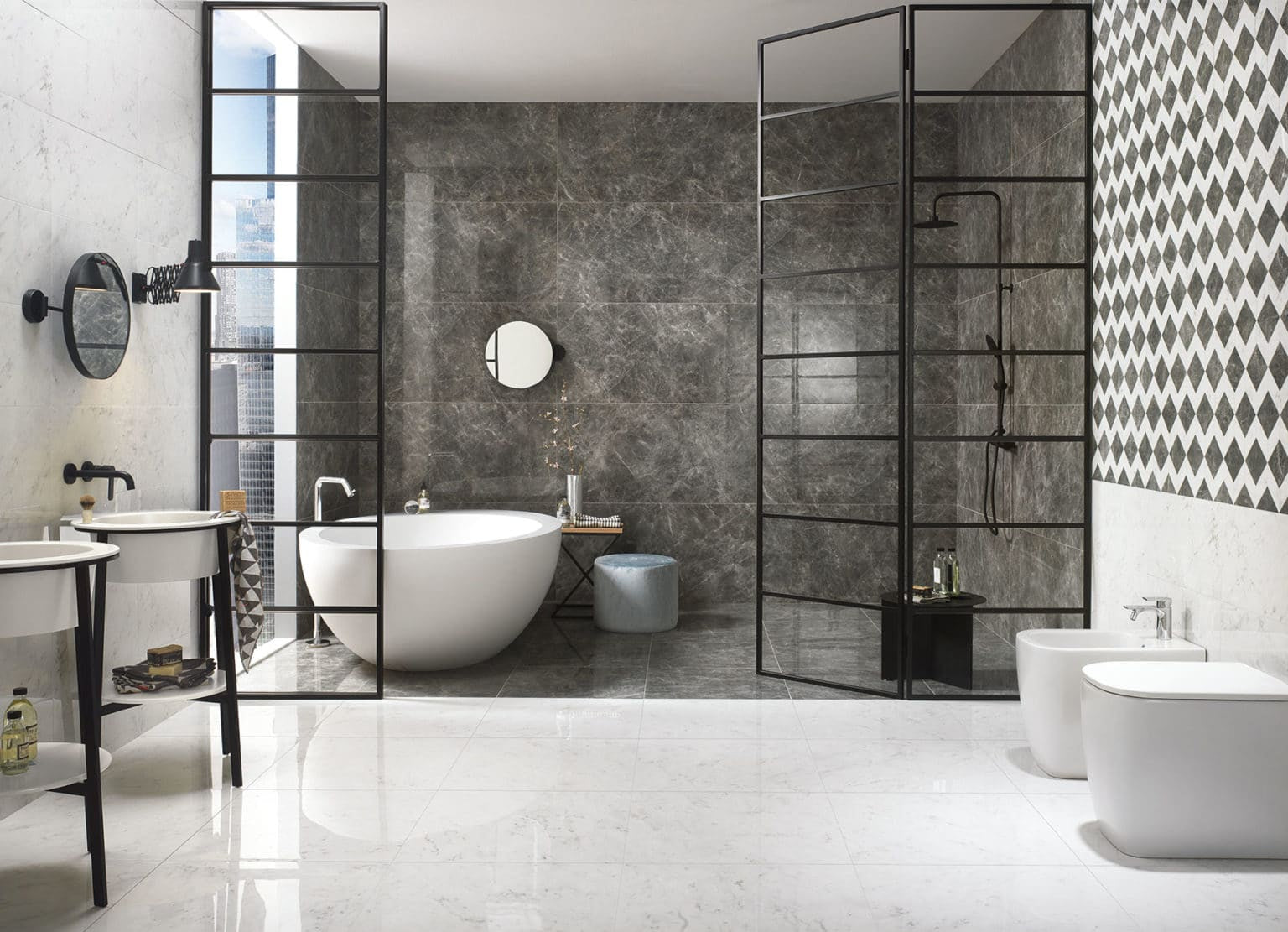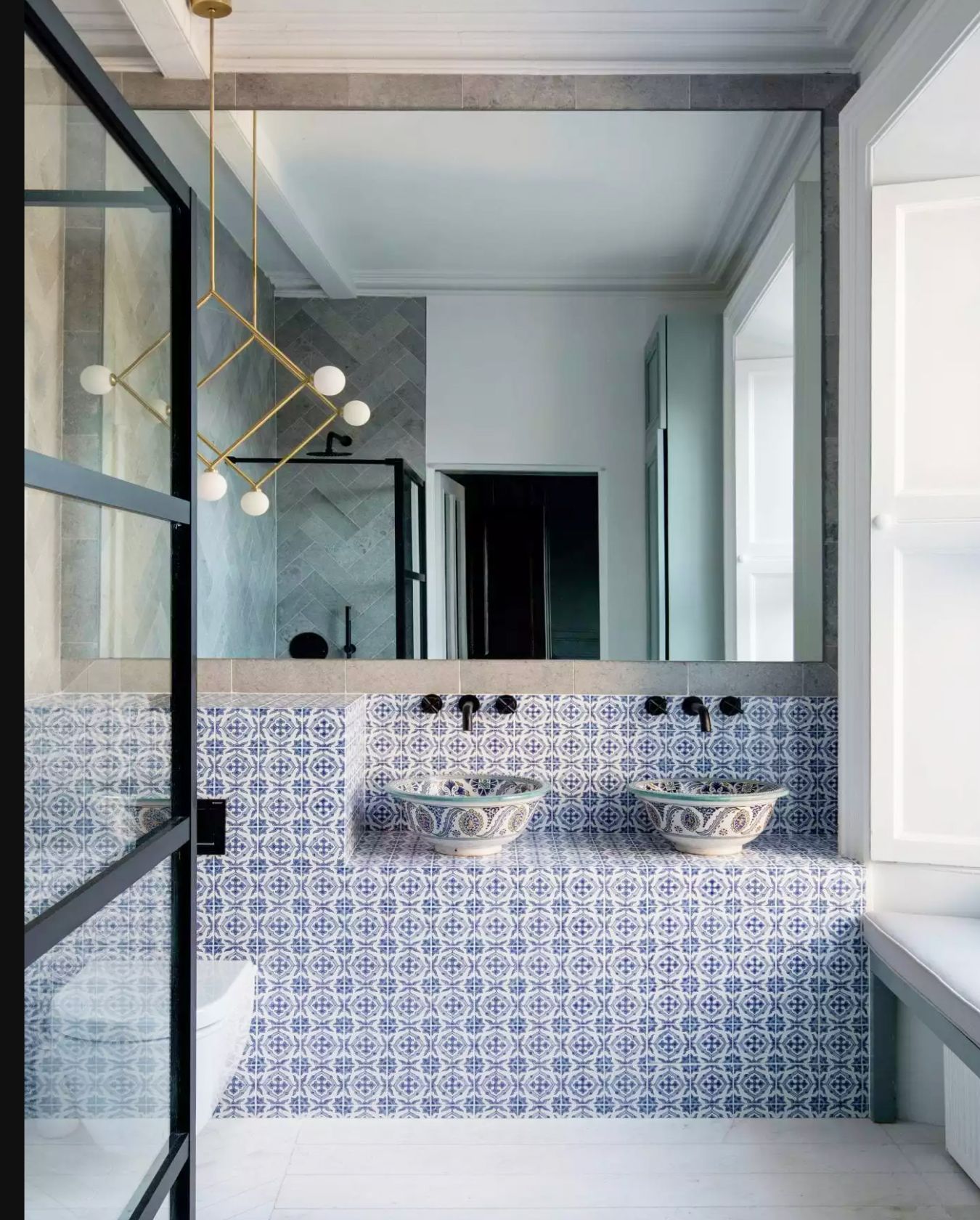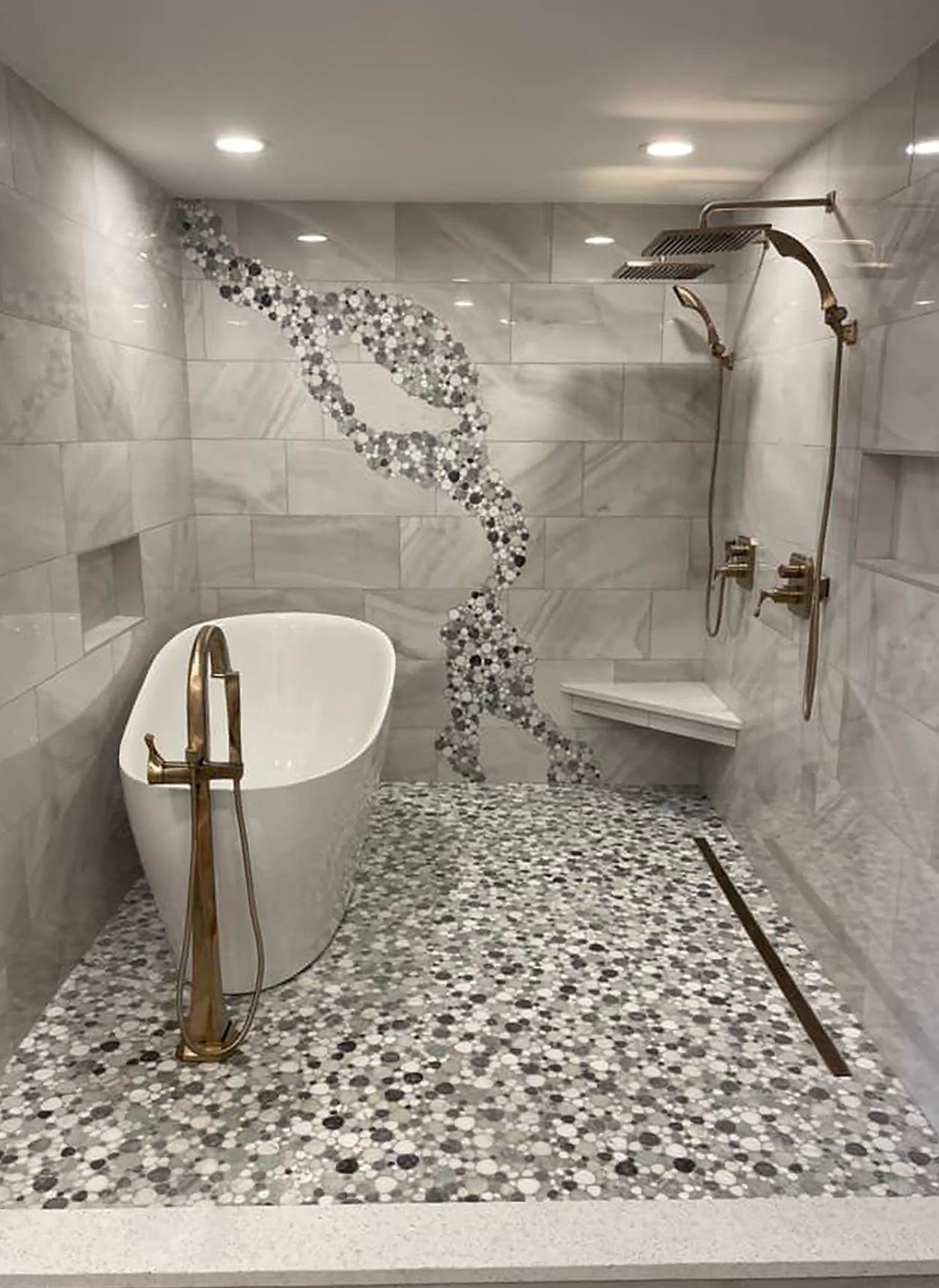Can you tile over wall tiles in a bathroom? Renovating a bathroom can be a daunting task, especially when considering options for updating existing wall tiles. Tearing out old tiles can be time-consuming, messy, and costly. However, tiling over existing tiles presents a viable alternative that can save time, money, and effort. In this comprehensive guide, we will explore the process of tiling over wall tiles in a bathroom, discussing the benefits, considerations, and step-by-step instructions for achieving professional results.

Understanding the Benefits of Tiling Over Wall Tiles
Cost Savings: Tiling over existing tiles eliminates the need for costly demolition and disposal of old tiles, resulting in significant cost savings for homeowners.
Time Efficiency: By avoiding the labor-intensive process of removing old tiles, tiling over existing tiles can expedite the bathroom wall renovation process, allowing for quicker completion and minimal disruption.
Minimized Mess and Disruption: Tearing out old tiles can create a considerable amount of dust, debris, and noise, disrupting daily activities and requiring extensive cleanup. Tiling over existing tiles reduces mess and inconvenience, making it a more convenient option for homeowners.
Assessing the Suitability of Existing Tiles
Tile Condition: Before tiling over existing tiles, assess the condition of the tiles to ensure they are firmly adhered to the wall and free of cracks, chips, or loose pieces. Damaged tiles may need to be repaired or replaced before proceeding with the tiling process.
Surface Preparation: Thoroughly clean the existing tiles to remove any dirt, grime, or soap scum that may affect adhesion. Additionally, roughen the surface of the tiles with sandpaper to promote better adhesion of the new tile adhesive.
Selecting Suitable Tiles and Adhesive
Tile Selection: Choose tiles that are compatible with the existing tiles in terms of size, thickness, and material. Porcelain or ceramic tiles are commonly used for tiling over existing tiles due to their durability and compatibility with tile adhesive.
Tile Adhesive: Select a high-quality tile adhesive suitable for tiling over existing tiles. Thin-set mortar is often recommended for this purpose, as it provides strong adhesion and flexibility, allowing for expansion and contraction of the tiles.

Preparing the Surface and Applying Tile Adhesive
Surface Preparation: Clean the existing tiles thoroughly with a mild detergent and water to remove any dirt, grease, or residues. Allow the surface to dry completely before proceeding with the tiling process.
Applying Tile Adhesive: Use a notched trowel to apply a thin, even layer of tile adhesive onto the surface of the existing tiles. Work in small sections to ensure adequate coverage and avoid excess adhesive buildup.
Installing New Tiles
Tile Layout: Plan the layout of the new tiles to ensure a symmetrical and visually pleasing arrangement. Begin tiling from the bottom of the wall and work your way up, using tile spacers to maintain consistent spacing between tiles.
Tile Installation: Press the new tiles firmly into the adhesive, using a slight twisting motion to ensure full contact with the surface. Use a tile cutter or wet saw to cut tiles as needed to fit around obstacles or edges.
Grouting and Finishing
Grout Application: Once the adhesive has cured, remove tile spacers and apply grout to the joints between the tiles using a grout float. Work the grout into the joints at a 45-degree angle, ensuring full coverage and removing any excess grout from the tile surface.
Finishing Touches: Clean the tile surface with a damp sponge to remove any grout haze or residue. Allow the grout to cure completely before applying a sealant to protect the grout lines and enhance the appearance of the tiles.

The role of bathroom tiles
Bathroom tiles are not just functional elements; they play a pivotal role in shaping the overall aesthetics, functionality, and durability of a small bathroom. From providing a protective barrier against moisture to creating a visually appealing environment, bathroom tiles serve multiple purposes that contribute to the comfort and style of modern living.
Aesthetic Appeal
Design Versatility: Bathroom tiles offer endless design possibilities, ranging from classic ceramic patterns to contemporary mosaic arrangements. Their versatility allows homeowners to express their personal style and create unique atmospheres that reflect individual tastes and preferences.
Color and Texture: Tiles come in a myriad of colors, textures, and finishes, allowing for creative experimentation with visual effects and tactile sensations. Whether opting for glossy surfaces that reflect light or matte textures that add depth, the choice of tiles significantly influences the ambiance and mood of the bathroom space.
Pattern and Layout: The arrangement of tiles can transform a mundane bathroom into a work of art. Intricate patterns, such as herringbone or chevron, can add a touch of sophistication, while strategic tile layouts can visually expand small spaces or accentuate architectural features.
Functional Benefits
Water Resistance: One of the primary functions of bathroom tiles is to provide a waterproof barrier that protects underlying surfaces from moisture damage. Tiles effectively prevent water infiltration, safeguarding walls, floors, and ceilings against mold, mildew, and structural deterioration.
Ease of Cleaning: Unlike porous materials like wallpaper or paint, tiles are easy to clean and maintain, making them ideal for high-moisture environments. Non-absorbent surfaces repel water and resist staining, requiring only regular wiping with mild detergent to maintain cleanliness and hygiene.
Durability and Longevity: Bathroom tiles are renowned for their durability and longevity, offering a resilient surface that withstands daily wear and tear. Unlike fragile materials like wood or laminate, tiles are resistant to scratches, chips, and fading, ensuring enduring beauty and functionality over time.

Hygienic Properties
Antibacterial Surfaces: Certain types of tiles, such as porcelain or glazed ceramic, possess inherent antibacterial properties that inhibit the growth of harmful microorganisms. These hygienic surfaces promote a healthier tile wall bathroom environment by reducing the risk of bacterial contamination and transmission.
Allergen Resistance: Unlike carpets or fabric wall coverings, tiles are hypoallergenic and inhospitable to dust mites, pollen, and other allergens. Smooth, non-porous surfaces discourage allergen accumulation, making tiles an ideal choice for individuals with respiratory sensitivities or allergies.
Odor Control: Bathroom tiles help mitigate unpleasant odors by preventing moisture absorption and bacterial proliferation. Proper ventilation combined with impermeable tile surfaces ensures optimal air circulation and odor management, maintaining a fresh and inviting atmosphere in the bathroom.
Conclusion:
Tiling over existing wall tiles in a bathroom offers a cost-effective, time-efficient, and convenient solution for renovating outdated or damaged tile surfaces. By following proper preparation techniques, selecting suitable tiles and adhesive, and adhering to best practices for installation and finishing, homeowners can achieve professional results that enhance the aesthetic appeal and functionality of their bathroom space. 
